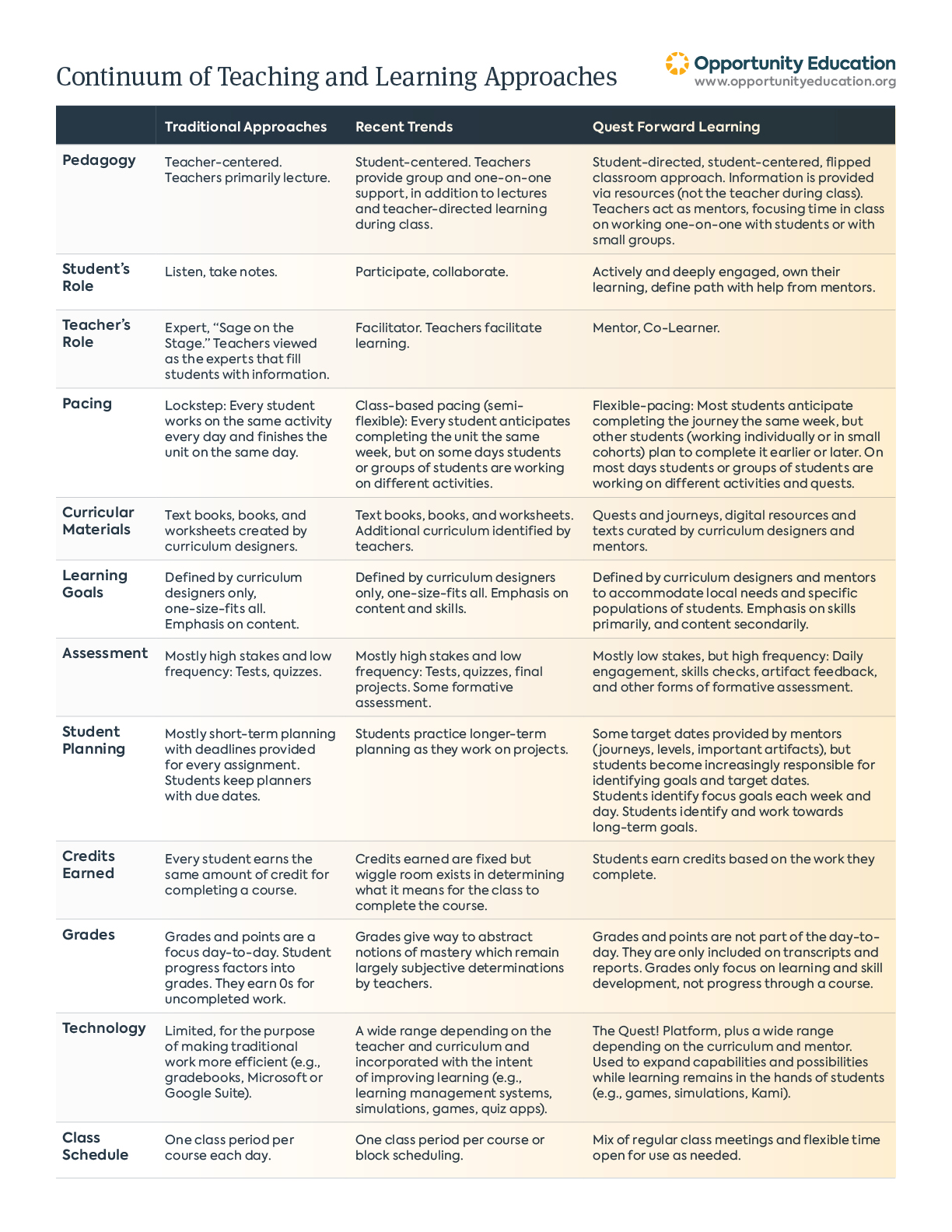What is your school’s teaching approach?
Our goal is to help teachers — and entire schools — shift towards student-centered, differentiated classes. These teaching approaches, like the model we developed, Quest Forward Learning, encourage students to own their learning and help them to develop skills that they’ll need beyond high school, such as collaborating, debating, planning, and managing time. Making this shift takes time and effort, but the benefits are well worth it.
The continuum below highlights characteristics and examples of various approaches to teaching and learning. It can help you understand how Quest Forward Learning deviates from traditional approaches, and maybe even help you understand where your school is situated on the continuum. Use this as a way to identify target areas where support may be needed, to help drive conversations about learning at your school, and to identify goals for improving teaching and learning.
It is important to realize that not everything about the traditional approach is bad; rather the traditional approach is often incomplete. For example: taking notes is important, and a student should also participate, collaborate, and ultimately develop a sense of ownership of their learning. Likewise, even when a teacher serves as a co-learning mentor, they can still be experts with information; they just shouldn’t see informational expertise as the endpoint in the evolution as teachers, but as a starting point that they move out from.
Where is your school on this continuum? Where are you? Likely you and your colleagues fall on many points on this continuum depending on the category. Start by choosing a category in which you often lean towards more traditional practices. What’s something that you can do to move towards the Quest Forward Learning vision for student learning?
Reach out to us if you’re interested in moving towards a more student-driven and skills-focused approach to teaching and learning.

